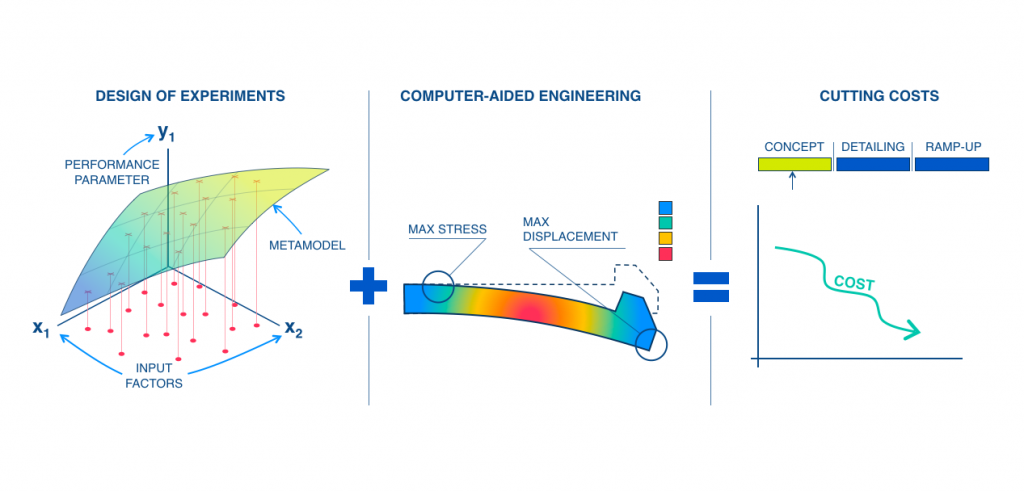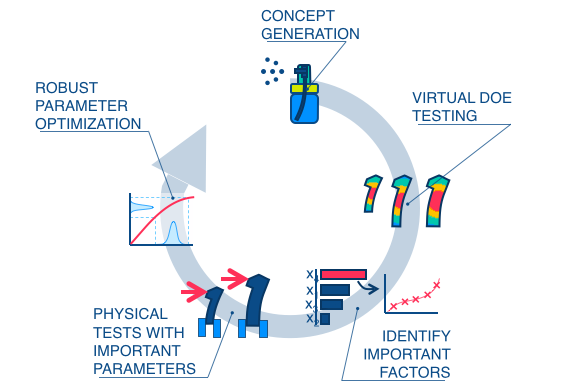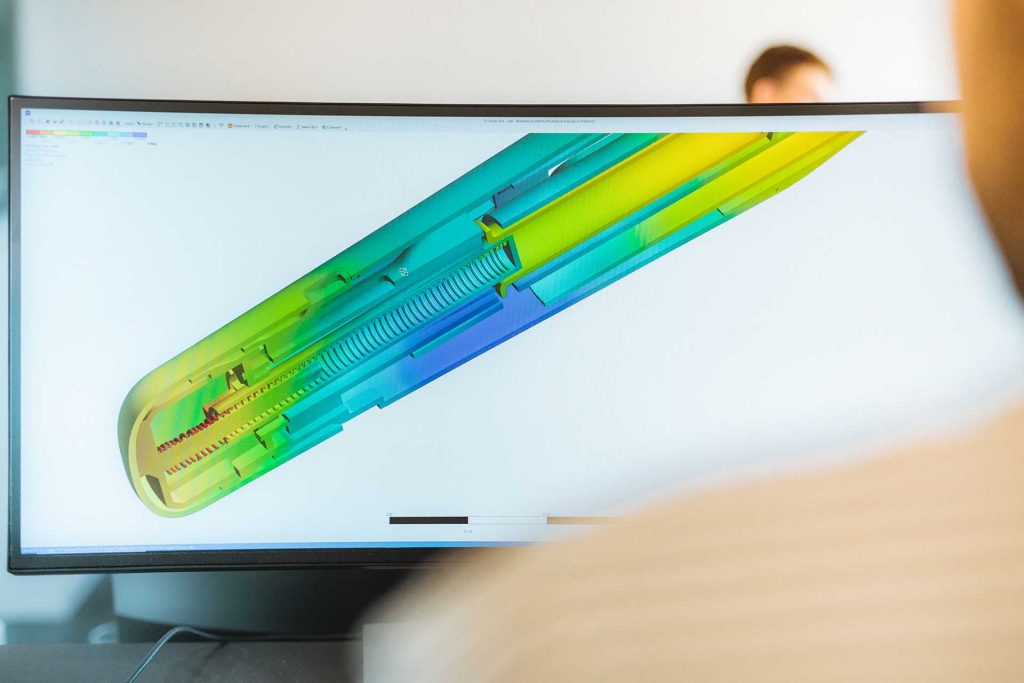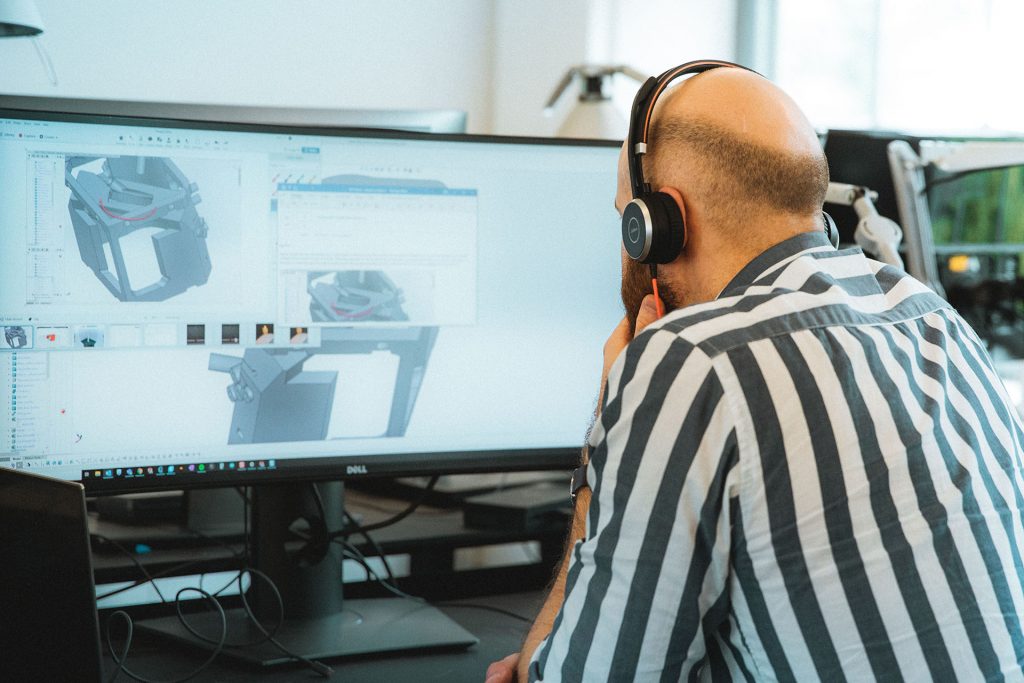Design of Experiments
Why you should apply virtual DoE to the design process
You are reading the first part of an article trilogy about Design of Experiments (DoE). The trilogy covers the why, when and how to perform virtual DoE in the design process. By following these guidelines, you will experience a faster, smarter and cheaper way to get results that are vastly more reliable and ultimately a greater chance of succeeding with your product.
In the following, we will focus on why you should apply virtual DoE to your design process and systematically narrow down the amount of crucial physical tests to perform.
Front-load your doe activities and gain early insight for the fraction of the cost

Robust Design is excellent for analysis as well as for synthesis of reliable products. Investigating complex product behavior by using DoE early in the design process is invaluable for the success of your product.
While usually applied in process domains, DoE (Design of Experiments) studies are attractive to use during the product development stage to gain valuable insight into the behavior of a mechanical product when subjected to various forms of variation throughout its lifetime.
The basic idea of DoE is that a number of factors, thought to impact a number of outputs, are systematically varied at different levels. A test plan, known as a design, is created by using statistical methods, and the results for each test are recorded. The results can then be processed and thus we gain insight on which factors have the most impact on our product performance.
Faster simulations allow smarter and cheaper experiments
A near universal fact in industrial product development is that the cost of change rapidly increases as the project progresses. Since performing tests on your mechanical product, as a part of a DoE, requires a certain level of maturity, physical tests can quickly become a costly affair. In the early phases, it is therefore prohibitively expensive to perform such analyses, especially amidst an abundance of concepts at different levels of details.
However, what if we could somehow utilize the strengths and insights from a DoE to decide which concepts to pursue further and which to bury, based on some key parameters? This is where virtual DoEs come into the picture. With the advent of CAE tools capable of simulating multi-physical phenomena on desktop computers, engineers are now able to quickly explore which parameters affect the key product functionality.
Specifically, using virtual DoEs, a simple ‘empirical’ model, also called a metamodel, can be constructed. This model takes into account the relative importance of the different test factors, e.g. design parameters, environmental conditions, or use patterns. Using specialized statistics software (SAS JMP or Minitab, for instance) in conjunction with CAE tools, a test plan can be made and the tests run in CAE. The resulting metamodel can be used to assess the sensitivity of the product performance to various sources of variation. On a higher level, the process is iterative, as are most product development projects. The process is illustrated below.
Physical testing is indispensable, but the added steps before provide insight and give early indications on which concepts perform most robustly.
Our next article will focus on when in the product development process to apply these methods. I will discuss the advantages of leveraging DoE early in the process and how it eases the testing and verification work later on.

Want to know more?
Insights you might also be interested in:

How Early Stage drop test simulations can uncover hidden design optimization insights
Learn from ALK’s success with Technolution’s experts, gaining crucial insights for smoother testing and reduced project risks.



What are the Benefits of Simulation with the Finite Element Method?
Will a medical device break apart when dropped onto a concrete floor? Does the device remain safe and functional if stored for years on a shelf before reaching the patient?


Why you should apply virtual DoE to the design process
Early product insights and fewer physical tests are some of the benefits of using Design of Experiments in medical device development.